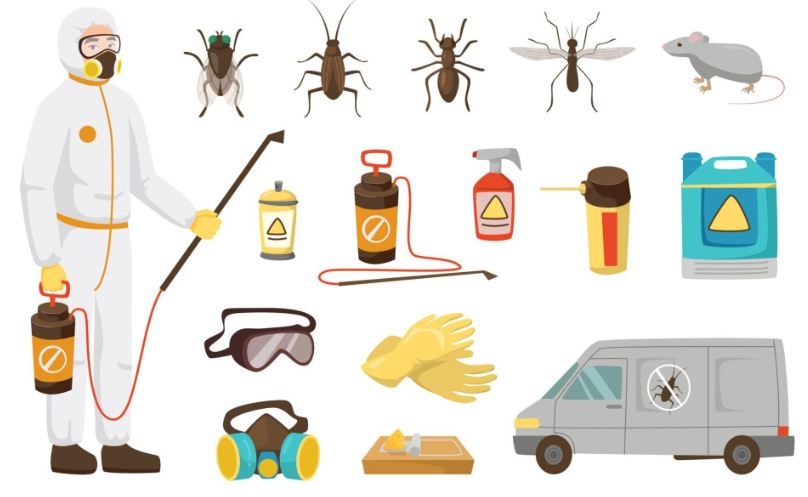A Future of Pest Control: Breakthroughs on the Future
Pest control has come a long way over the years, evolving from traditional methods to innovative strategies that emphasize sustainability and effectiveness. As we look to the future, it is crucial to understand the developments on the horizon that are set to transform the way we handle pests in our homes and establishments. With an increase in knowledge about eco-friendly practices and the impact of pests on well-being and property, the need for efficient pest control solutions is greater than ever.
In this article, we will explore the most recent innovations in pest control, addressing common concerns and highlighting the tools and methods that can maintain your living spaces pest-free throughout the year. From understanding why DIY pest control often fails to exploring the dangers posed by persistent invaders like cockroaches and bed bugs, we aim to provide you with the knowledge needed to safeguard your home. Whether you are dealing with temporary pests or looking for pet-safe and eco-friendly options, our comprehensive guide will highlight the future trends that could change how we protect our areas from undesirable guests.

Comprehending Familiar Pests
Familiar household pests can disrupt the ease of our homes and pose health risks. Among the frequently found are formicidae, roaches, and rodents. Formicidae are commonly found in the kitchen, drawn by edibles, while cockroaches tend to thrive in humid, shadowy spots. Mice and rats, including mus species and larger rodents, seek nesting spots and sustenance inside homes, especially during colder months.
Another group of pests includes cimex lectularius and wood-eating pests. Cimex can cause discomfort and restless nights, as they hide in mattresses and furniture, emerging at night to feed on the blood of humans. Termites, on the contrary, can silently cause damaging effects to a house, feeding on timber and compromising its integrity without immediate signs of their presence.
Temporary pests such as mosquito species, wasps, and spiders also require care. queen creek pest control in pools of water and can make outdoor events unpleasant, while wasps build nests near dwellings, posing a risk to individuals with sensitivities. Spiders, though typically innocuous, can be uninvited guests, and their presence frequently signals the existence of further insects they prey upon. Recognizing these common pests is essential for efficient protection and mitigation plans.
Expert vs. DIY Pest Control
In the realm of pest control, many homeowners face the dilemma of whether to tackle the problem on their own or call in professionals. DIY pest control methods often attract homeowners due to their perceived simplicity and cost-effectiveness. Common household items and various over-the-counter remedies are marketed as instant solutions. However, although some do-it-yourself methods can provide temporary relief, they often lack the power needed to get rid of pests completely. Without a thorough understanding of the pest’s behavior and lifecycle, it is easy to misdiagnose the issue and apply poor treatments.
On the other hand, professional pest control services bring skills and advanced equipment to the table. Licensed pest control technicians have extensive training in identifying different pests and understanding their behavior. They can assess the severity of an infestation and provide personalized solutions that target the specific pest problem effectively. Furthermore, industry professionals are knowledgeable about safety protocols and can apply treatments that are safe for both the residents and the environment. Their ability to track pest patterns can prevent future infestations, making the investment worthwhile in the future.
Ultimately, the choice between Do-It-Yourself and professional pest control hinges on the extent of the infestation and the homeowner’s comfort level with handling pest problems. For minor issues, DIY solutions might suffice, but when facing persistent or severe infestations, professional assistance is often the more reliable option. As fallacies about pest control persist, it is crucial to understand that effective pest management often requires expertise beyond what most homeowners possess.
Seasonal Bug Prevention Methods
As the seasons change, so do the types of pests that enter our houses. In spring, common household pests like ant colonies and termite infestations start to appear, seeking nourishment and nesting sites. To stop infestations, it's important to seal any gaps and holes around the foundation and windows, and to eliminate standing water where these pests might breed. Regularly inspecting your home for indications of moisture can also discourage pests that flourish in damp environments.
During the warm months, pests such as mosquito populations and biting insects become more prevalent. To make the most of your outside spaces without the nuisance of bugs, consider using organic pest control solutions like lemon-scented candles and essential oils. Moreover, keeping your garden neat and free from debris can cut down on shelter for insects. Installing screens on windows and doors can also assist keep bugs out while allowing fresh air inside.
As autumn approaches, rodents begin seeking warm places and shelter in homes. To shield your home from these fall pests, focus on pest-proofing by securing entry points, such as gaps around pipes and ventilation. Additionally, keeping firewood away from the house and storing food in sealed containers will discourage rodents and other pests from moving into your home for the cold months. Frequent inspections and proactive measures throughout the year can ensure a pest-free environment as the seasons change.